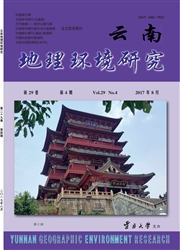

 中文摘要:
中文摘要:
采用完全分解分析方法,以徐州都市圈为研究区域,探讨2000~2014年成长型都市圈工业碳排放及其驱动效应的时空分异特征.结果表明,徐州都市圈工业增长与碳排放量呈正相关性,工业碳排放强度呈下降趋势,且总体上呈现南北高而中部低的"凹"字型格局;资源劳动密集型产业碳排放强度最高,且呈下降趋势,而技术密集型产业碳排放强度最低;规模效应对工业碳排放表现为正向驱动作用,结构与技术效应则对工业碳排放有抑制作用.在空间上,规模效应呈现由以济宁为中心的核心边缘型演变为中间高、两侧低的"凸"字型格局,结构效应保持核心边缘型空间格局,技术效应呈现由北高南低演变为东高西低的格局.优化工业空间布局,促进工业结构绿色化转型,大力推广应用低碳技术,是实现工业低碳化发展的关键路径.
 英文摘要:
英文摘要:
A dopting com plete decom position analysis m ethod, taking Xuzhou M etropolitan A rea as the research unit,the spatial and tem poral characteristics of carbon em issions and its driving effect are analyzed from 2000 to 2014. Itcan be found that there is positive correlation betw een carbon em issions and industrial grow th, and industrial carbonintensity tends to decrease, presenting a cleft pattern th at high in north-south and low in the middle. In the carbonin tensity , resource and labor intensive industries are the highest, presenting a dow nw ard tren d , but tech-intensiveindustry is the low est. M eanw hile, scale effect for industrial carbon em issions show s the positive driving effect, butstructure effect and technical effect present an inhibitory effect. In the space, scale effect presents a convex patternfrom a center-peripheral pattern w ith Jining as the core to high in the middle and low in the sides, structure effectkeeps a center-peripheral p attern, at the sam e tim e, technology effect evolves from the pattern w ith high in thenorth and low in the south into high in the east and low in the west. Finally, some suggestions are given. T he keypath to achieve a low-carbon industrial developm ent is to optim ize industrial space layout, accelerate green transformation of industrial stru cture, and vigorously prom ote the use of low-carbon technology.
 同期刊论文项目
同期刊论文项目
 同项目期刊论文
同项目期刊论文
 期刊信息
期刊信息
